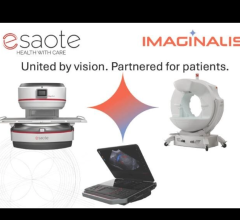
During the blood pool phase, it significantly shortens the T1 and T2 relaxation times of the blood, thus achieving bright blood effects in T1-weighted imaging and dark blood effects in T2/T2*-weighted imaging. In the delay phase, by the local aggregation of ferumoxytol disrupting the uniformity of the local magnetic field, the decrease of the transverse magnetization vector Mxy is expedited, resulting in a negative contrast effect. ©Science China Press
March 29, 2024 — Magnetic resonance imaging (MRI) is a cornerstone in the landscape of medical diagnostics, celebrated for its non-ionizing and non-invasive nature. With nearly 40% of MRI procedures requiring contrast agents for optimal sensitivity, the quest for safer and more effective alternatives to gadolinium-based agents (GBCAs) has intensified. GBCAs, despite their widespread use, come with concerns over nephrotoxicity, long-term tissue deposition, and limited cell specificity, posing challenges in safely conducting enhanced MRI scans for patients with renal impairment, non-invasively mapping lymph nodes, tracking transplanted stem cells, and assessing inflammation.
Enter Ferumoxytol: a superparamagnetic iron oxide nanoparticle that has been approved in the United States, Europe, and Canada for intravenous iron supplementation. Since its clinical introduction in 2009, Ferumoxytol-enhanced MRI (FE-MRI) has significantly reshaped CE-MRI practices. Compared to GBCAs, Ferumoxytol stands out for its excellent safety profile, higher relaxivity rates, prolonged blood pool half-life, non-renal metabolism, and multifunctionality. These attributes confer numerous technical advantages to FE-MRI, such as reduced contrast agent dosage, extended imaging windows, absence of nephrotoxicity, higher MRI time efficiency, and the capability for molecular imaging.
A recent review article published online by the National Science Review (NSR) and authored by Professor Ning Gu's team from Nanjing University, meticulously explores the clinical applications and inherent technical superiority of FE-MRI. This comprehensive review not only bridges the gap between clinical demands and engineering innovations but also forecasts the potential development trajectory of FE-MRI. Specifically, the article delves into FE-MRI’s extensive clinical applications in diagnosing cardiovascular systems, the mononuclear phagocyte system, tumors, inflammation, and cell transplantation evaluation, meticulously cataloging the clinical indications. Emerging themes such as micrometer-scale imaging of cerebral microvessels, rapid FE-MRI imaging, multimodal image fusion, and vascular segmentation are emphasized, offering valuable insights for researchers in nanotechnology, (clinical) radiology, computer science, and related interdisciplinary fields.
As the medical imaging field continues to evolve, the advent of ferumoxytol as a potential next-generation MRI contrast agent marks a significant leap forward. Its comprehensive clinical utility, coupled with ongoing research and technological advancements, positions FE-MRI at the forefront of safer, more efficient diagnostic imaging. This promising trajectory not only enhances our understanding of various diseases but also opens new avenues for non-invasive, detailed exploration of the human body, making FE-MRI a beacon of innovation in the realm of medical imaging.
For more information: https://academic.oup.com/nsr


 December 04, 2025
December 04, 2025 









